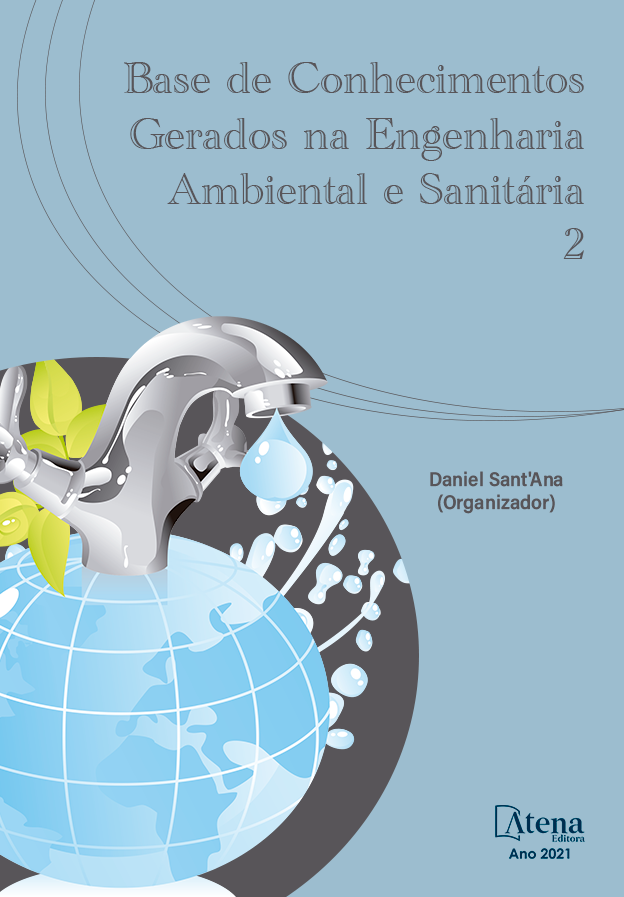
EFEITO DO pH NA LIXIVIAÇÃO E SOLUBILIDADE DE COMPOSTOS DA AREIA DESCARTADA DE FUNDIÇÃO
O aumento da industrialização levou a maior exploração dos recursos naturais e descuido no descarte de resíduos, ampliando questões sobre a contaminação ambiental. A areia descartada de fundição (ADF) é um resíduo gerado em grande quantidade na indústria de metais e se torna um passivo ambiental quando descartado. Nessas condições, através do processo de lixiviação, os compostos dos resíduos são solubilizados e levados para o solo e lençóis freáticos próximos. Portanto, o objetivo foi analisar a influência dos pH (3,5, 7,0 e 10,0) na liberação de sulfatos, cor e turbidez na água pela lixiviação (método 1) e solubilização (método 2) dos agregados. O material foi submerso em água por 24 horas (lixiviação) e por aproximadamente 84 horas (solubilidade) sendo o sobrenadante analisado quanto ao pH, condutividade elétrica, acidez, alcalinidade, DQO, sulfatos, cor e turbidez. Realizou-se a caracterização física e de composição química dos materiais por meio de análise granulométrica, FRX, DRX e FEG. Quando analisadas, a cor e a turbidez tiveram seus valores máximos no pH alcalino quando comparado com a água de controle. No método 1 a cor chegou a 2,0 uH e a turbidez 6,4 uT, sendo esse valor acima do limite de 5,0 uT, estabelecido pela Portaria de Consolidação nº 5 do Ministério da Saúde. Para o sulfato os valores máximos foram obtidos no pH ácido. No método 1 o maior valor de sulfato foi 69,5 mg L-1 e no método 2 foi 50,6 mg L-1, posto que ambos não excederam os limites da portaria (250 mg L-1) esse parâmetro apresentou valores não preocupantes. Conclui-se que o aumento do pH gerou maior cor e turbidez em ambos os métodos e que a ADF se enquadrou em resíduo não contaminante pelos parâmetros analisados.
EFEITO DO pH NA LIXIVIAÇÃO E SOLUBILIDADE DE COMPOSTOS DA AREIA DESCARTADA DE FUNDIÇÃO
-
DOI: 10.22533/at.ed.45121190113
-
Palavras-chave: ADF; contaminação ambiental; processo de lixiviação; solubilização;
-
Keywords: WFS; Environmental Contamination; Leaching process; Solubilization.
-
Abstract:
With the industrialization increase, the exploration of the natural resources grew along with the careless waste disposal, expanding the environmental contamination issue. The Foundry Waste Sand (FWS) is produced in a major amount in the metal industry and became an environmental liability when discarded. Due to those conditions and through the leaching process the compounds in the waste are solubilized and carried to the soil and near groundwaters. Therefore, the goal was to analyze the pH (3,5, 7,0 e 10,0) influence on the release of sulfates, colour and turbidity in the water through leaching (1st method) and solubilization (2nd method) of the aggregates. The material was immerse in water for 24 hours (leaching) and for about 84 hours (solubility) being the supernatant analysed concerning pH, electric conductivity, acidity, alkalinity, COD, sulfates, colour and turbidity. The physical characterization and the chemical composition of the materials were made through the particle size analyses, XRF, XRD and FEG. When analyzed, the colour and turbidity had its higher values at the alkaline pH when compared to the control water. In the 1st method the colour reached the value of 2.0 uH and the turbidity of 6.4 uT, this being above the limit of 5.0 uT established by Consolidation Ordinance No. 5 of the Ministry of Health. For the sulfates, the maximum values were obtained in the acid pH. In the 1st method, the higher value was 69. 5 mg L-1 and in the 2nd method was 50.6 mg L-1 , since both did not exceed the consolidation limits (250 mg L-1) this parameter presented non-worrying values. It follows that the increase of the pH resulted in higher colour and turbidity in both methods and that the WFS was fitted as a non-contaminating waste by the analyzed parameters.
-
Número de páginas: 16
- Maria Magdalena Ribas Döll
- Lilian Tais de Gouveia
- Luanna Di Mario Rocha


